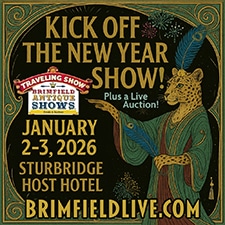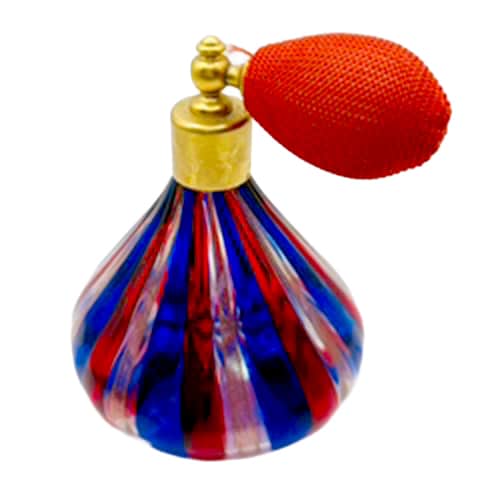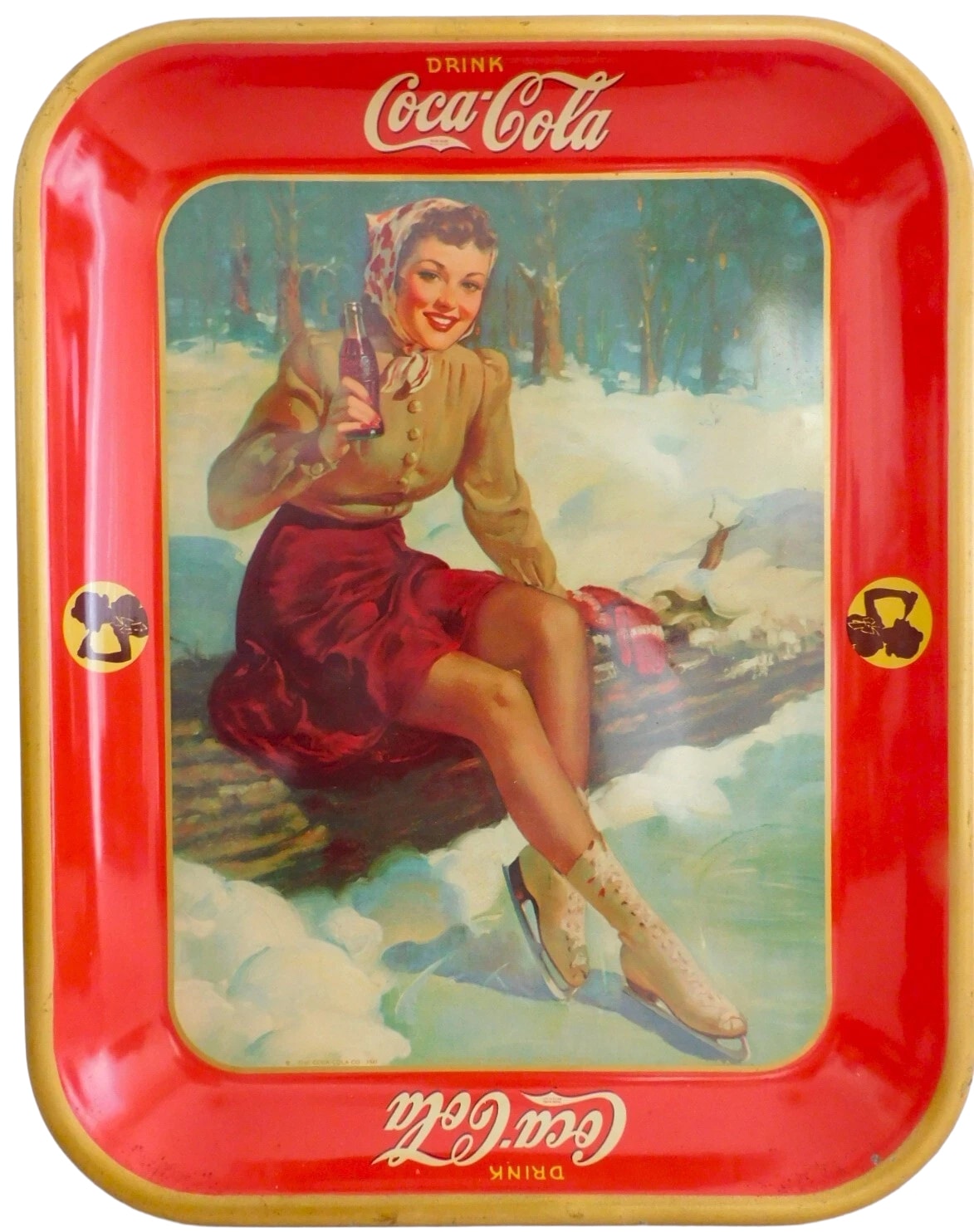The Timeless Draw of Mid-Century Modern Furniture
by Jessica Kosinski
The phrase “Mid-Century Modern” most often refers to goods produced in the middle of the 20th century. Today, the phrase is how we label a certain type of design, but that was not always the case. It’s time for us to take a peek into what Mid-Century Modern actually is and how the Mid-Century Modern style movement was born.
What is Mid-Century Modern Furniture?
In loose terms, Mid-Century Modern furniture has clean lines and looks streamlined without a lot of extra embellishments. However, the exact time span covered is open to interpretation. For instance, Merriam-Webster defines it as furniture made between the 1930s and 1960s, but many experts would also include the 1970s as part of the Mid-Century Modern period.
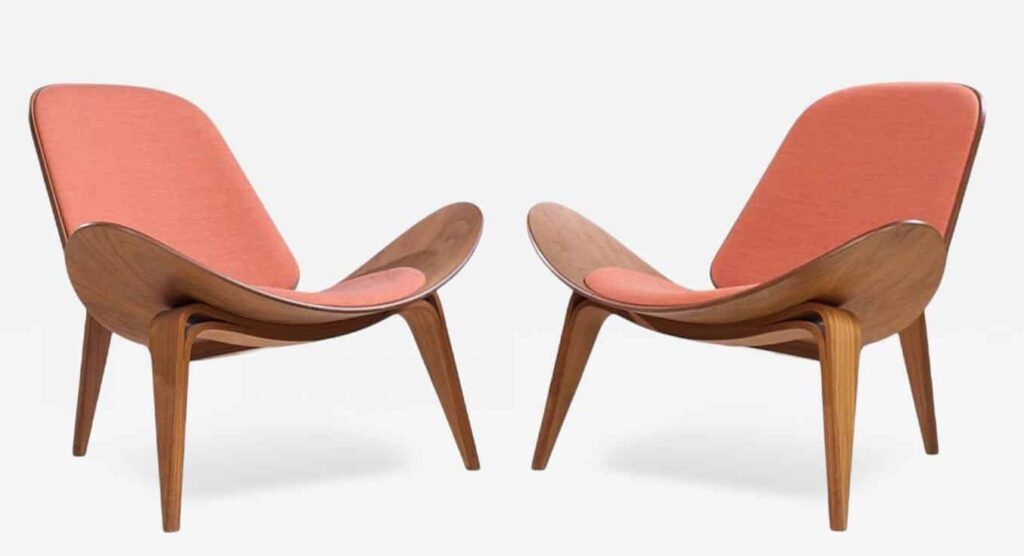
Mid-Century walnut shell chairs
The Birth and Popularization of the Phrase “Mid-Century Modern”
It may not surprise you to hear that the term “Mid-Century Modern” was first formed in the 1950s. On the other hand, you might find that very surprising, since some people credit author Cara Greenberg with coming up with the phrase as part of the title for a book she published in 1984 called Mid-Century Modern: Furniture of the 1950s.
The truth is, the phrase was used many times before that, but it was used inconsistently. It had no real definition. Ironically, it wasn’t until the Mid-Century Modern period was over that Greenberg’s book truly defined it. Soon, it became a much more well-known and commonly used phrase in design circles.
The Post-World War II Style Shift
One of the major causes for the birth of Mid-Century Modern furniture was World War II. When the war ended, people were craving connection. They wanted more gatherings and closer relationships with friends and family members. It was a time when floor plans started to open up, and comfort, especially for larger groups of people, was a key component. Along with that need came one for more streamlined storage ideas to maintain a clean look, along with the ability to rearrange the furniture easily on short notice.
There was a drastic post-war shift away from big, single-use furniture. Instead, people wanted multi-tasking pieces in their homes that were easy to move around, such as coffee tables with built-in storage. Furniture selection was less about style than it had been previously and more about function. Although many Mid-Century Modern pieces had plenty of style.
As for the “open concept” concept, it completely altered the design needs of the time period. When everyone could suddenly see the kitchen, dining, and living spaces all at once, they would feel more connected to each other. However, they could also notice a lot more details about what was contained in those spaces. It suddenly became more important to make sure pieces of furniture looked good from all angles, since furniture was not arranged against walls as much as it had been in the past.
The Post-War Materials Boom
An interesting reason Mid-Century Modern design took over almost every household design and was produced in large volume was the boom in post-war materials availability. During the war, steel and aluminum were produced in large quantities to fit out the armed forces. The surplus of these materials made them readily available for new production after the war. That’s why both were used to make many Mid-Century Modern pieces.
Hans J. Wegner designed swivel chair, 1955
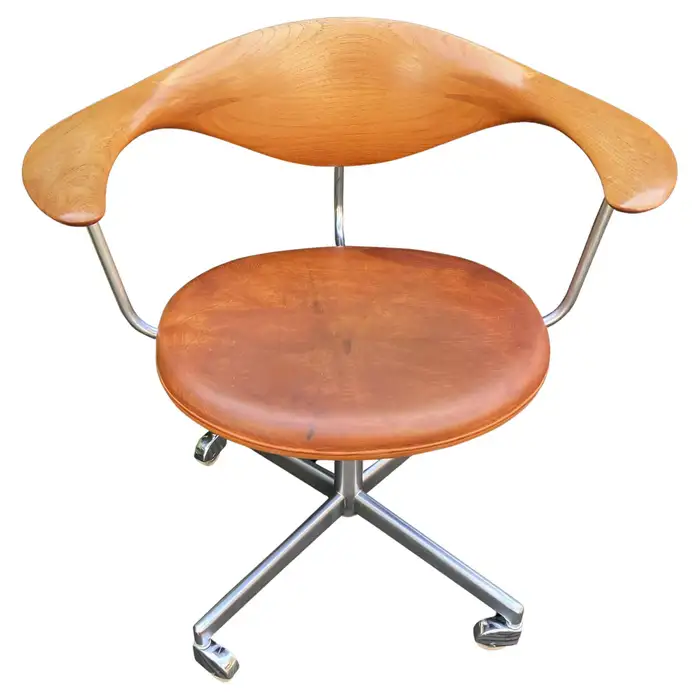
Along with those metals, there was a desire to design furniture that felt warmer and more inviting. Part of that meant bringing elements of the outside into homes. Woods like teak, rosewood, and walnut were often used in furniture making during that time period for that reason.
Technological advancements also created more opportunities for unique Mid-Century Modern designs. For instance, particleboard was invented in Germany during World War II. Molded plastics, fiberglass, vinyl, and laminates like Formica also quickly became popular.
A variety of available fabrics also helped shape the Mid-Century Modern furniture movement. Polyester, nylon, and wool were just a few of them. They were often used to upholster items like sofas and chairs or to produce rugs. Usually, they featured interesting geometric patterns. They were also considered practical because many of them were durable and long-lasting.
Other Common Mid-Century Modern Elements
Geometric fabric patterns are not the only common elements of Mid-Century Modern design. The whole movement is associated with cleanliness, organization, and relaxation. Simple shapes, clean edges, and neutral colors are signature elements of furniture and background elements. Although rooms decorated in the Mid-Century Modern style usually have plenty of pops of color. The color is often noted in the accessories, such as rugs, lamps, and wall art, displayed in the home.
Another vital thing to know is Mid-Century Modern design was not limited to furniture and accessories. It had (and still has) a lot to do with the design of the actual rooms. Often, Mid-Century Modern room designs included fewer full walls in favor of glass doors or large windows. The point was to let in as much natural light as possible, so homeowners could feel more relaxed and connected to nature, as well as to one another.
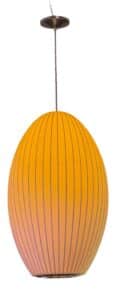
Atomic oval hanging bubble lamp, George Nelson
The Importance of Lighting in Mid-Century Modern Design
No room design is complete without the right lighting. The middle of the Twentieth Century was a time when lights were not just lights. They were actual works of art. From the sputnik chandelier, with its design reminiscent of bursting fireworks, to globe-shaped shades, pendant lights, and slender-stalked floor lamps, each light was unique yet unmistakably Mid-Century Modern. The lights from that time period helped to give every space its own unique character. In fact, a lot of homes had lighting elements that were real attention grabbers and conversation starters.
Keeping it Clean With Mid-Century Modern Design
Mid-Century Modern is known in some design circles as the style that will never die. Some designs, whether in fashion or furniture, go through phases. They blaze up and then fizzle out in spurts of time. However, the great thing about Mid-Century Modern is that it keeps everything clean and uncluttered. Every piece of furniture is comfortable, but it also has a practical function, or sometimes multiple functions. Nothing features extra frills, general bulkiness, or overly busy embellishments.
Some Top Mid-Century Modern Designers
If you’re interested in collecting Mid-Century Modern pieces, a good starting point is learning about some of the top designers who helped start the movement in the first place. Many of their works are still highly collectible today. Here are some examples:
Lounge chair and ottoman designed by Charles and Ray Eames in 1956
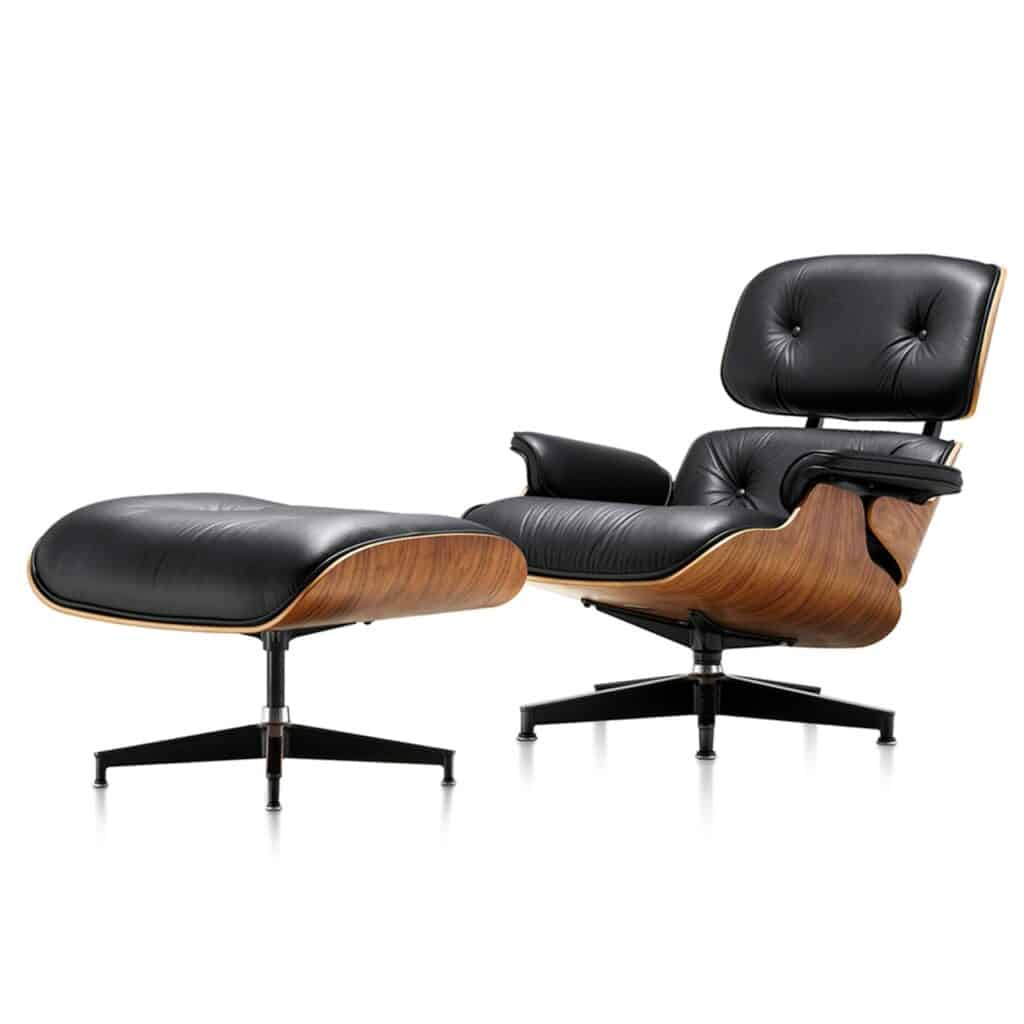
- Charles and Ray Eames: Possibly the most influential couple to ever design furniture during the period, Charles Eames and his wife, Ray-Bernice, are possibly best known for designing a particular chair known as the Eames Lounge Chair in 1956, which helped launch another movement towards ergonomic furniture designs. The chair, which came with a matching ottoman, was not their only design, though. Far from it. Among others, they designed toys, fabric styles, and multiple other chairs, including the Eames Chaise for the famous director Billy Wilder, who was also a family friend at the time.
- Eero Saarinen: The Tulip Chair was designed by Eero Saarinen, a Finnish-American architect, in 1955. With its futuristic look, the chair and its matching Tulip Table quickly took off. Saarinen also created the famous Gateway Arch in St. Louis.
- Arne Jacobsen and Hans Wegner: Wegner designed more than 500 chairs over the course of his career. Eventually called “King of Chairs” because of that, he partnered up with Jacobsen, another chair king, to create rounded Danish chairs that were also very popular during the mid-1900s.
- George Nelson: The Herman Miller furniture company is now famous for designing office furniture. The company started as Star Furniture Co. in 1905, eventually becoming Herman Miller in 1923. From 1947 to 1972, George Nelson was Director of Design for the company. He was particularly known for creations like the Coconut Chair, Marshmallow Sofa, and various uniquely-shaped clocks. Another fun design of his that many people still enjoy today was the bubble lamp.
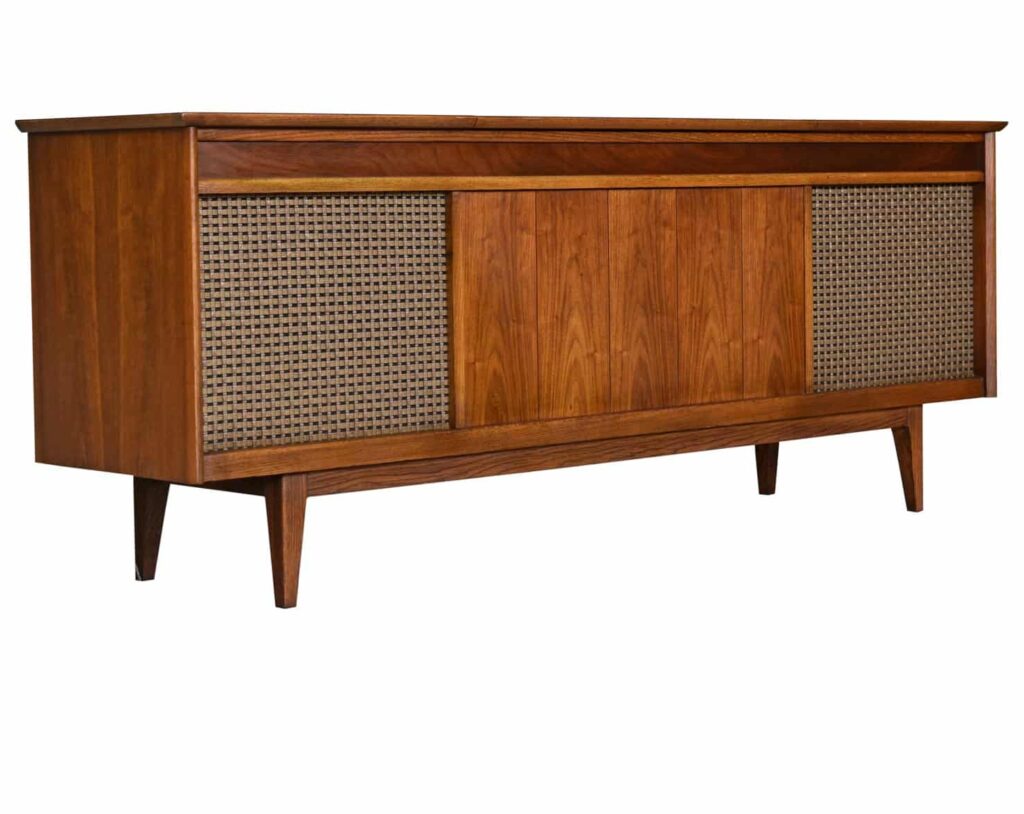
Mid-Century Modern console stereo cabinet credenza
The Timeless Draw of Mid-Century Modern Furniture
Many people will tell you Mid-Century Modern furniture is timeless, and they’d be right. Everyone keeps getting drawn back to it because the furniture made during that time tends to be strong, durable, practical, and clean-looking. More than that, it is usually inviting while still feeling well-organized.
Another trait that makes it so timeless is the fact that it is eco-friendly. Much of it was built from metal or easily refinished wood, which means a lot of it has survived quite well. Rather than filling up landfills, it has been passed down through families or between friends over the years. A simple reupholstery job or some new paint can also update many pieces to match whatever the current trends are. Each piece is an excellent investment because it will last not just for years, but potentially for generations.
Buying Mid-Century Modern Furnishings
If you want to start your own Mid-Century Modern buying binge, you should find it relatively easy for two reasons. First, there are a lot of original pieces of furniture from the middle of the 1900s still available, which means you can find them almost anywhere. Check estate sales, thrift stores, and websites like eBay for the best deals. Keep in mind that some pieces made by the designers listed above can be pretty expensive, but there are also plenty of pieces of furniture from the period that are affordable, regardless of your budget.
Keep your options open when buying furniture. There is no reason you have to buy all Mid-Century Modern pieces. It is a design style that can be easily mixed with other styles. You could give a more traditional room a little extra flair using a Mid-Century Modern lamp. Another option would be to match a coffee table from that era with a more bulky couch. It all depends on your own personal preferences and design plans.
White tulip arm chair designed by Eero Saarinen, 1956, Aluminum base, fiberglass, upholstery, Made in USA by Knoll
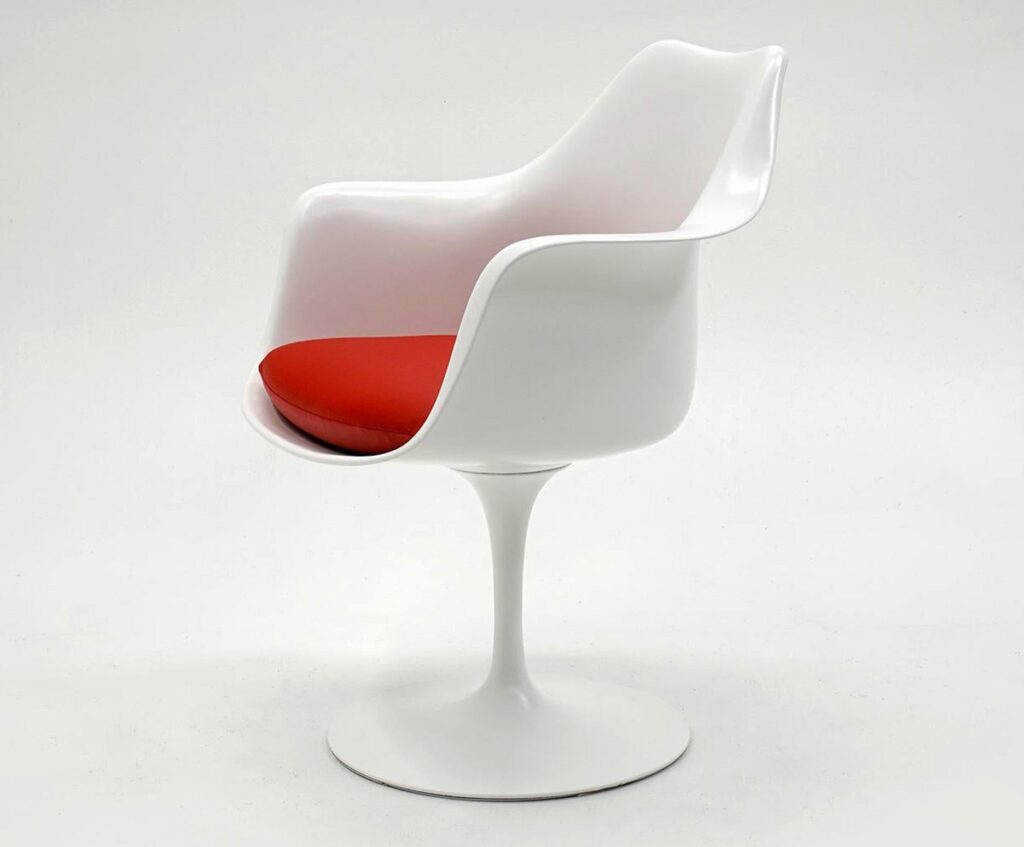
Intent May Also Influence Your Shopping Strategy
If you want the best of the best in Mid-Century Modern design, be prepared to potentially pay thousands of dollars per piece. Items from top designers like Eames and Nelson often have high price tags. On the flip side, they can also be good investments. However, they may not work for you if you have a limited budget.
On the more affordable front, you can find plenty of furniture that is just as sleek-looking and long-lasting at places ranging from yard sales to thrift shops. Plus, if you’re lucky, you might find the occasional deal on an item by a top designer. But even the less expensive pieces can give you all the clean and comfortable feelings you want from a Mid-Century Modern piece. It takes a little time, paint, and fabric to freshen them up.
Spotting Originals
A big issue with Mid-Century Modern furniture that plagues today’s buying markets: reproductions. There’s nothing wrong with buying a reproduction piece of furniture if you know what you are buying. However, if you want an original, you need to learn how to spot one. Look for clues like patina, period hardware, and original maker’s marks to identify the real deal. Also, don’t be surprised if you find original pieces with some damage that needs a minor repair. That can be a good sign because it usually means you have located an original piece.
Jessica Kosinski has been a freelance researcher and writer since 2001. She developed a passion for pre-1990s television and films as a child and she has never grown out of it. Recently, she turned that passion into a retro TV and film blog. Follow along with her at https://medium.com/@jkos_writing, as she dives deep into the characters, actors, quirks, and trivia that brought us some of the greatest films and shows in TV history and also discusses some of the more obscure films and shows most of us may have forgotten.



